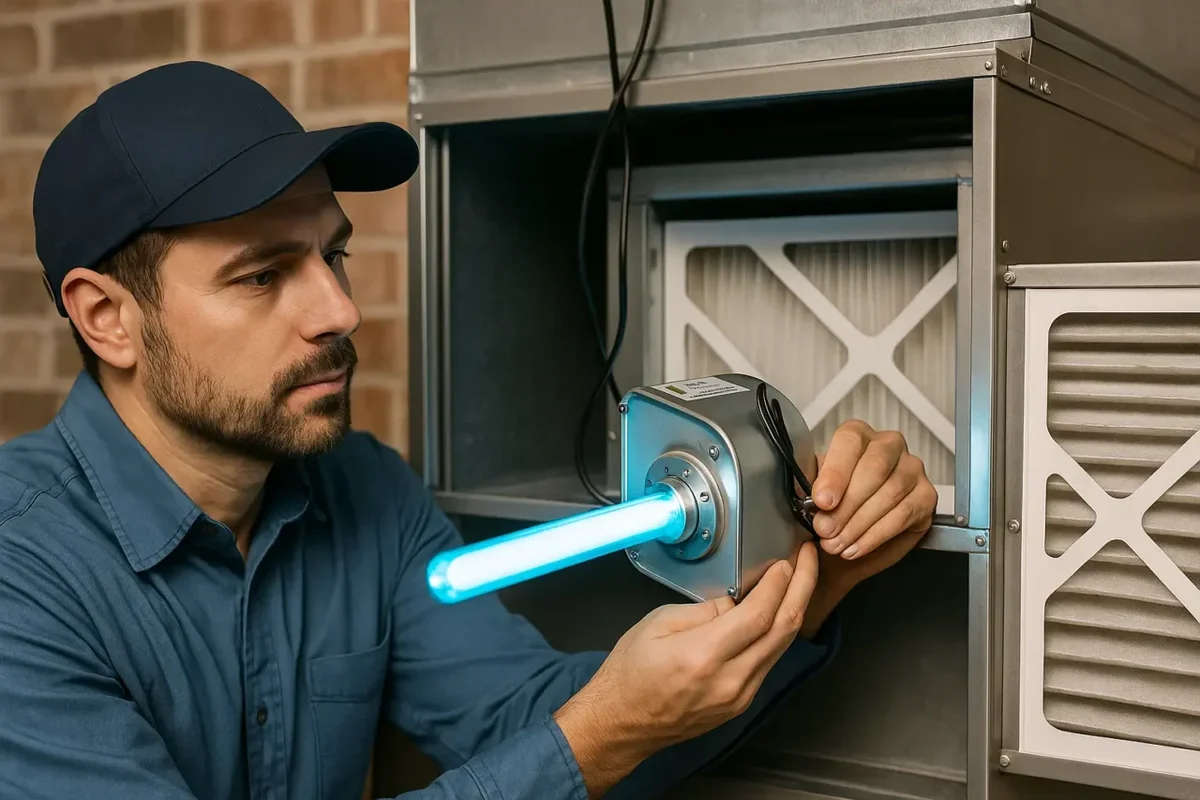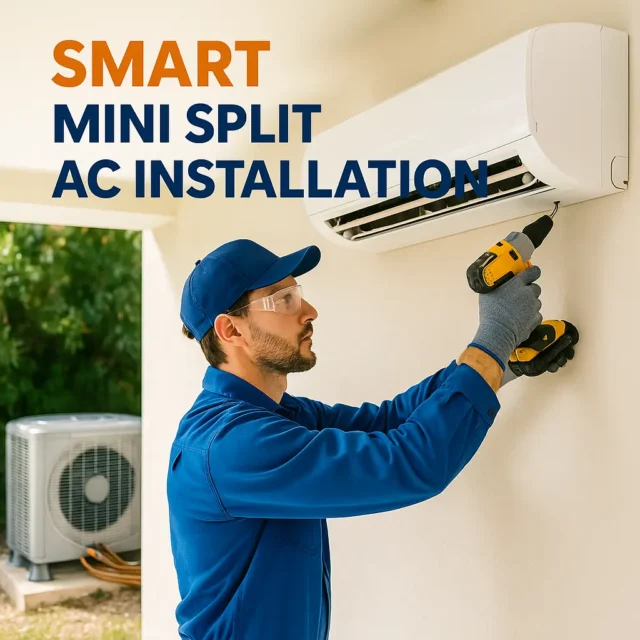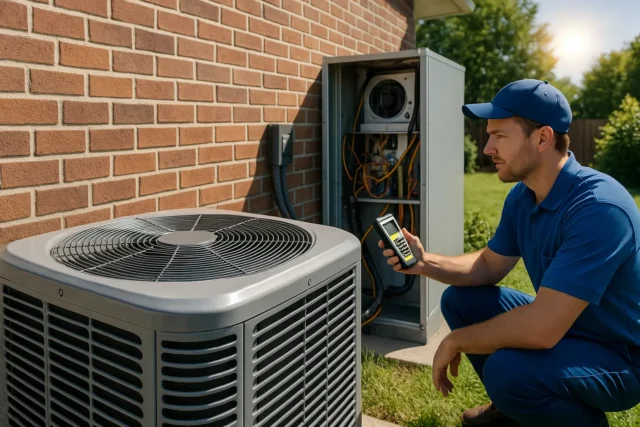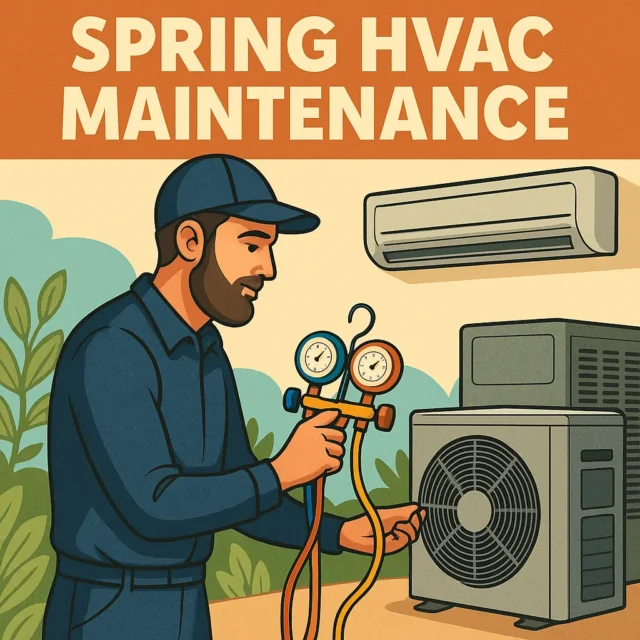HVAC UV Light Installation: Clean Air and Reliable Performance

Maintaining healthy indoor air is more important than ever. Families spend most of their time indoors, which means the air you breathe at home directly affects your comfort, energy levels, and long-term health. One proven way to make your HVAC system healthier and more efficient is hvac uv light installation.
In this extended guide, we’ll dive into how UV lights work, why they are especially valuable for air handlers, and how they help balance comfort, energy savings, and peace of mind.
Why Homeowners Are Turning to UV Lights
Indoor air can be up to five times more polluted than outdoor air. Dust, pet dander, pollen, bacteria, and mold spores accumulate inside ductwork and air handlers. Standard filters capture larger particles but cannot destroy microorganisms.
This is where UV technology becomes valuable. Originally used in hospitals and labs to sterilize surfaces, UV-C lights are now widely available for residential HVAC systems. Positioned at the right points inside your unit, they neutralize contaminants before they spread throughout your living space.
The result? Fresher, cleaner air without constantly fighting allergies or odors.
How UV Lights Improve Air Handler Performance
The air handler is the heart of your HVAC system. It pushes cooled or heated air through your ducts, ensuring every room in your home receives proper airflow. However, it’s also where many efficiency problems start.
When moisture collects on the evaporator coil, it creates the perfect breeding ground for mold. Even a thin layer of biofilm on the coil can restrict airflow and force your unit to work harder. This extra strain drives up your energy bills and shortens system life.
By installing UV lights inside the handler chamber, you prevent mold growth and keep the coil surface clean. With unrestricted airflow, the handler uses less energy to circulate air, leading to lower bills and longer equipment lifespan.
Key Benefits You Can Expect
Healthier Breathing – Eliminates mold spores, bacteria, and allergens that filters miss.
Consistent Comfort – Prevents coil buildup that leads to weak airflow.
Lower Bills – Clean coils require less energy to move air.
Longer Equipment Life – Less strain means fewer breakdowns and repairs.
Odor Elimination – Removes musty or unpleasant smells linked to mold.
Quiet Operation – A clean handler operates more smoothly and quietly.
Types of UV Light Systems for HVAC
Not all UV systems are the same. A technician will recommend one or both of these:
Coil Sanitizing Lights – Installed close to the evaporator coil. They shine continuously on the coil to prevent mold and biofilm.
Air Sanitizing Lights – Placed in the return ducts. These are stronger lamps that sanitize moving air as it passes by.
Some systems combine both for maximum protection.
Step-by-Step Installation Process
Professional hvac uv light installation usually takes less than two hours. Here’s what happens:
System Inspection – The technician checks your air handler and duct layout.
Choosing Placement – Coil vs. duct location depends on your home’s needs.
Wiring and Mounting – UV lamps are mounted securely and connected to your system’s power source.
Safety Measures – UV-C light is powerful, so housings and switches are added for protection.
Testing – The technician runs your system to confirm correct placement and operation.
When to Consider HVAC UV Light Installation
You notice frequent allergy or asthma symptoms indoors.
There’s visible mold on vents or a musty odor when the AC runs.
Your home is in a humid climate where mold thrives.
Energy bills are climbing even with regular maintenance.
The air handler coil needs frequent cleanings.
If any of these sound familiar, UV lights could be the upgrade your system needs.
Maintenance Requirements
While UV lights are low-maintenance, they’re not “set it and forget it.” Bulbs typically last 9–12 months before replacement is required. Regular checks during seasonal HVAC tune-ups ensure your system continues running smoothly.
Technicians also check bulb intensity, wiring, and placement during inspections.
Cost vs. Savings
Upfront cost: $300–$700 installed, depending on lamp type.
Annual maintenance: Mostly bulb replacement.
Savings: Preventing coil fouling alone can cut energy use by up to 20%.
In addition, you avoid costly service calls for airflow issues, mold remediation, and early equipment replacement.
Frequently Asked Questions
Q: Will UV lights replace my air filter?
No. They complement filters by killing microorganisms that filters can’t trap.
Q: Do UV lights work year-round?
Yes. They protect your system in both cooling and heating seasons.
Q: Are they safe?
When installed correctly, UV lights are fully contained and safe for your household.
The Role of UV Lights in Air Quality Strategy
UV lights are most effective when combined with other good practices:
Regular filter changes.
Seasonal duct cleaning.
Annual system tune-ups.
For homeowners committed to clean indoor air, adding UV lights to their handler is a strong step forward. For complete maintenance, you may also consider duct services like AC repair to keep your system balanced.
Why Air Handlers Benefit the Most
Air handlers constantly manage airflow and pressure. Because they pull air from multiple rooms, they naturally accumulate more dust, dander, and humidity than other HVAC components. This makes them the most vulnerable to efficiency loss.
Installing UV lights directly in or near the handler keeps this critical part of your HVAC system clear of biological growth, extending its useful life while ensuring better comfort throughout your home.
Conclusion
Your HVAC system works silently behind the scenes to keep your home comfortable. But without protection, mold, bacteria, and allergens can slowly take over your air handler and ducts.
With professional hvac uv light installation, you can breathe easier, lower your bills, and extend the life of your air handler. For families who value comfort and clean indoor air, this is one of the smartest and most cost-effective upgrades available today.


